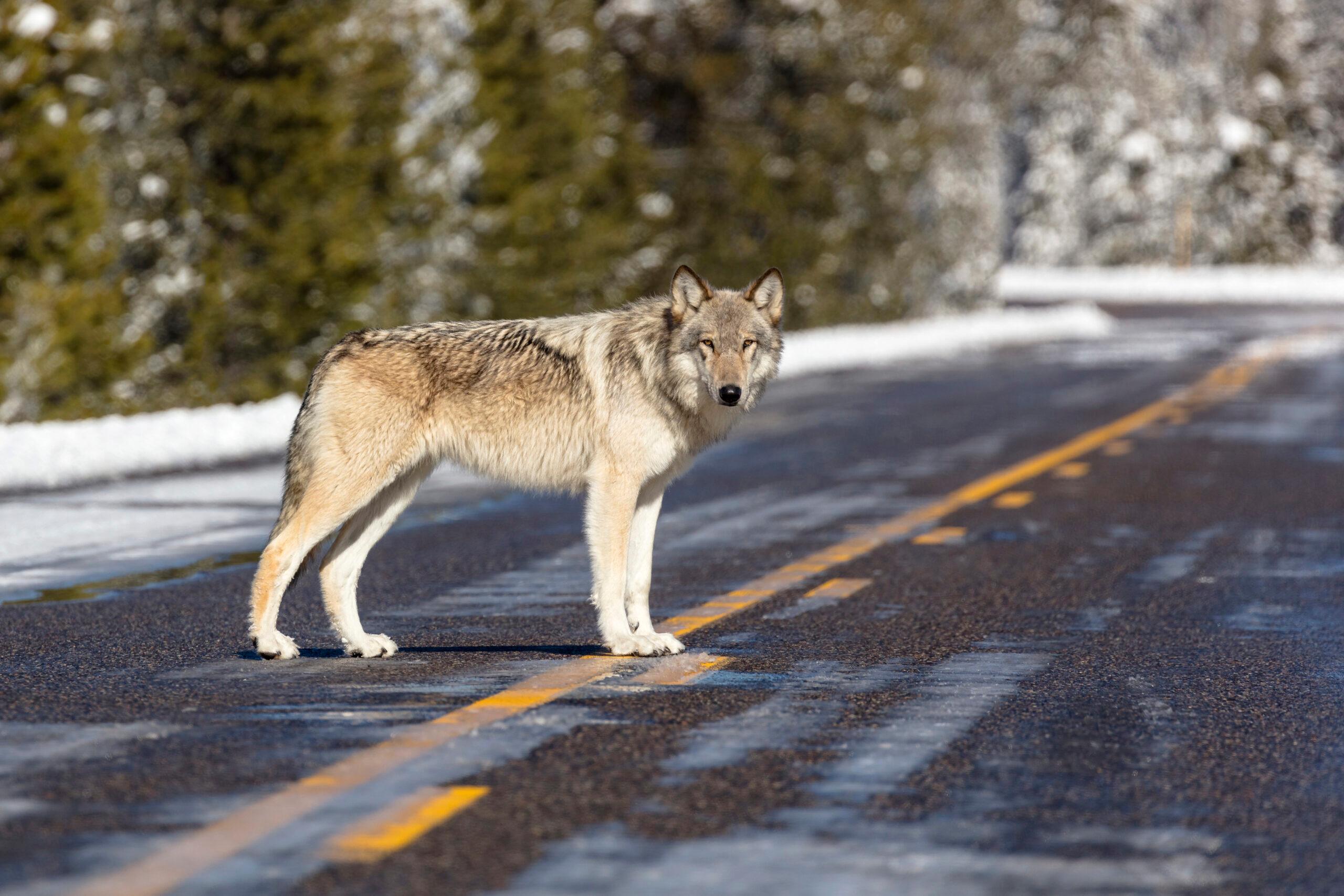
After more than two years of public meetings and revisions, the Colorado Parks and Wildlife Commission voted unanimously on Wednesday to approve a final plan to reintroduce gray wolves.
The decision keeps Colorado on track to release wolves on the Western Slope by the end of the year, meeting requirements laid out in a ballot initiative narrowly approved in 2020. Conservation groups say it marks the first time voters — in any state — have ordered the reintroduction of an endangered species.
In a statement following the vote, Gov. Jared Polis said the commission had approved a "responsible plan to implement the will of voters" improved by "thoughtful input" from thousands of Coloradans.
The attention to public input and consensus is no accident. In putting together their wolf reintroduction plan, state wildlife managers have tried to navigate the deeply polarized politics around the predator following federal reintroduction efforts in Yellowstone National Park and Idaho almost 30 years ago.
Many Colorado hunters and ranchers now worry the predators could kill their livestock and devastate game species. To address those concerns, Colorado's plan calls for a phased approach to wolf reintroduction with generous compensation for livestock killed by the predators.
Here's what's in the plan, and how it's changed
Under the plan, Colorado would release 10 to 15 wolves on state or private land each winter over the next three to five years.
Wildlife officials would then ratchet down state-level protections as the animal’s population grows. The species would be downgraded from "endangered" to "threatened" once there are 50 wolves recorded in the state for four consecutive years. Wolves would be delisted once there are 150 wolves recorded for two years or 200 wolves at any point.
An early draft of the plan included a final phase in which wildlife officials could reclassify wolves as a game species, opening the door to an organized hunting program. Colorado Parks and Wildlife eliminated the stage following objections from conservation groups.
Another major revision raised the cap on compensation for livestock lost to wolves. Under the final plan, a rancher could receive seven times the market value — up to $15,000 — for lost cattle, sheep, working dogs or other domesticated animals. The same cap applies to related veterinary expenses, which means a rancher could receive a maximum of $30,000 per animal.
Ranchers have argued the additional compensation will help cover the indirect effects of reintroducing wolves, such as lower birth rates and slower weight gain. The higher payout ratios, however, are only available if a rancher takes active steps to minimize wolf conflicts.
WildEarth Guardians, a conservation group, wanted the state to go further and require coexistence techniques like quickly removing livestock carcasses. Lindsay Larris, the group's wildlife program director, added the plan gives wild managers too much leeway to decide when a wolf threatens people or livestock — and should be killed.
"If caution and coexistence are emphasized in those determinations, wolves stand a chance to thrive. If not, there will likely be more conflict than there needs to be.” Larris said.
The plan doesn't say exactly where wolves will be reintroduced or where they'll come from
The state’s finalized plan names Idaho, Montana and Wyoming as the best sources for wolves. It lists Oregon and Washington as other places with suitable wolf populations.
There's just one big problem: It's unclear if wildlife managers in any of those states would provide wolves to Colorado. The governor of Wyoming is opposed to the idea. A report from 9news found state wildlife officials in other western states also don’t appear to be close to approving any wolf transfers.
As for an eventual release location, the plan confirms a "donut hole" region more than 60 miles from any state border. By releasing wolves there, wildlife managers hope to reduce the odds of the predators immediately bolting into Wyoming, Utah or New Mexico.
The finalized plan also clarifies the first batch of reintroductions will occur in the zone's northern section, which runs along the Interstate 70 corridor between Glenwood Springs and Vail. It notes more specific release locations won't be made public to protect private landowners and future wolf populations.
State wildlife managers will conduct "targeted outreach" to notify nearby ranchers, residents and others prior to local wolf releases, according to the plan.
Pending legislation could delay wolf reintroduction
While Colorado Parks and Wildlife officials remain committed to reintroducing wolves by the Dec. 31 deadline, lawmakers are considering a bill that could foil the timeline by requiring the state to win special designation from the federal government first.
Colorado has already applied for the permit, which would allow state wildlife managers to legally trap or kill wolves under the U.S. Endangered Species Act. Dan Gibbs, the executive director of Colorado’s Department of Natural Resources, has told lawmakers he expects it will be approved before the December reintroduction deadline.
But rural lawmakers aren't taking any chances. The bipartisan group of bill sponsors wants to be sure reintroduction doesn't proceed unless the state wins the permit.
The bill is now in the final stages of consideration before it's sent to Gov. Jared Polis.








